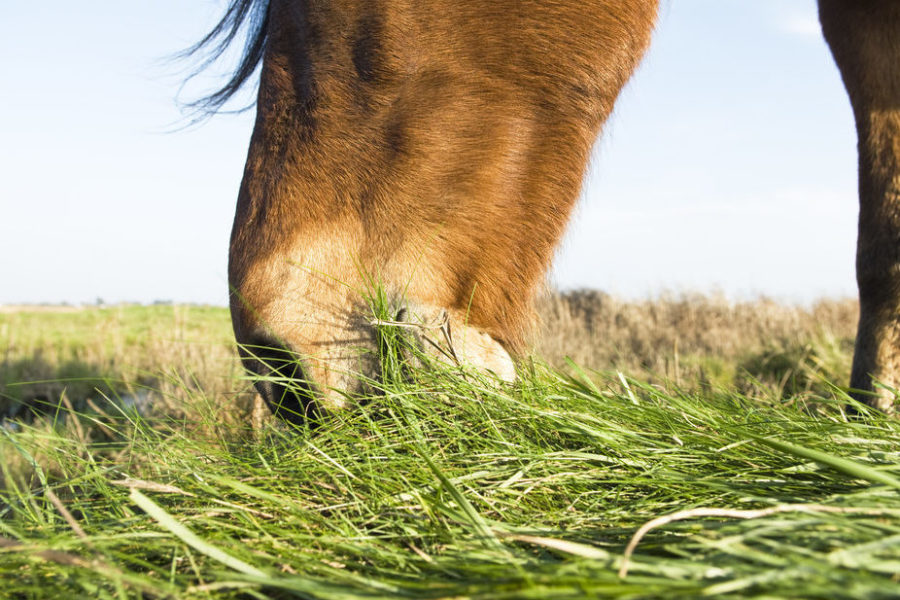No environmentally conscious horse owner likes the idea of spraying a herbicide on their pastures. However, keeping your pastures free of weeds is an important and worthwhile goal. Weeds are not only unsightly, but they also pose a number of health risks to horses. Many weeds are toxic, while others can be high in sugars and non-structural carbohydrates that can create health concerns such as laminitis.
It can be extremely difficult to correctly ID all the weeds in our pastures to determine their potential risk. For example, where I live in the Southeastern United States, many horse owners mistakenly identify fl at weed as dandelion. Flat weed is extremely high in fructan and other sugars and non-structural carbohydrates. It presents a laminitis risk, especially as it is an attractive grazing choice for horses, given its high sugar content. It’s not uncommon to drive by a horse pasture in the spring and see it covered with little yellow fl at weed flowers; ask the owner, and he’ll incorrectly tell you they’re just dandelions.
Managing herbicide use
Considering the risks posed by weeds in horse pastures, what is the best way to minimize or eliminate herbicide use? While completely eliminating herbicide use may be preferable, this may not be the best option for most horse owners – at least in the short term – especially if the pastures are currently overgrazed and weeds are present.
Hand pulling weeds is an option, but extremely labor intensive. Most horse pastures are simply too large for this to be a realistic option.
The only viable long-term herbicide reduction strategy is to maintain a healthy, dense stand of pasture grasses. Healthy grasses are better equipped to outcompete weeds, whereas stressed, poor or overgrazed grasses are sure recipes for weeds to take over.
If weeds are present, then an initial round of herbicide application may be your best option to eliminate the existing weed stand. Contact your local agriculture extension agent to get free assistance with choosing the best and safest herbicide to use, based on the weeds that are present.
Inhibiting weed growth
Once the weeds have been killed, you can start to improve how your pastures are managed and significantly reduce or eliminate the need for future herbicide applications. Maintaining good soil health is also critical, and this means testing the soils every three years for pH and nutrient levels, and applying lime and fertilizer as recommended in the soils report. Not only will this reduce weed infestation, but the properly fertilized pasture grasses will also tend to be lower in sugar content.
Another often-overlooked issue that can lead to weed growth is soil compaction. If your soil feels hard or dense, aerating it and topdressing with compost (ideally provided by your horses) can alleviate compaction and reduce weed growth.








